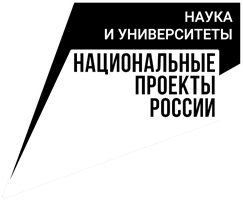Seminar
«Mathematical modeling of geophysical processes: direct and inverse problems»
Seminar Organizing Committee
| Leaders: |
Corr. RAS V.N. Lykosov (Marchuk Institute of Numerical Mathematics of RAS, RCC MSU); Doctor of Physics and Mathematics V.M. Stepanenko (RCC MSU, Geographical Faculty of Moscow State University) |
| Secretary: |
A.V. Debolsky (RCC MSU, A.M. Obukhov Institute of Atmospheric Physics of RAS) |
PROGRAM
17:15 (GMT+3)
| Nosov M.A. | Department of Physics of Sea and Land Waters, Faculty of Physics, Lomonosov Moscow State University |
| Kolesov S.V. | Department of Physics of Sea and Land Waters, Faculty of Physics, Lomonosov Moscow State University |
| Bolshakova A.V. | Department of Physics of Sea and Land Waters, Faculty of Physics, Lomonosov Moscow State University |
| Nurislamova G.N. | Department of Physics of Sea and Land Waters, Faculty of Physics, Lomonosov Moscow State University |
| Sementsov K.A. | Department of Physics of Sea and Land Waters, Faculty of Physics, Lomonosov Moscow State University |
Mathematical models of tsunami waves
Tsunami waves are one of the most dangerous natural disasters, which can be accompanied by numerous human casualties and colossal material damage. Mathematical modeling is widely used both in solving problems of operational and long-term forecasting of tsunamis, and for studying the nature of this formidable natural phenomenon.
The main attention in the report will be focused on approaches to the description of waves caused by seismic bottom movements. A “hierarchy” of models of tsunami generation by an earthquake will be presented, from the simplest ones, assuming that the formation of coseismic (residual) displacements of an absolutely rigid bottom is instantaneous and the transfer of these displacements to the free surface of an incompressible water layer, to the most complex ones, implying a joint description of the behavior of the compressible water layer and the underlying elastic half-spaces. The problem of wave generation in the water layer by a seismic wave propagating along the ocean floor will be presented separately.
The problem of the propagation of a tsunami in the open ocean will be considered and the influence on this process of the phase dispersion of gravitational waves, the effects of the Earth's rotation, the compressibility of water and the elasticity of the bottom will be discussed.
In conclusion, it is supposed to give a brief overview of the approaches to the mathematical description of waves generated by landslides, meteorological causes and falling meteorites.
Zoom conference link (March 25 from 05:15PM GMT+3):
- Topic: "Математическое моделирование геофизических процессов: прямые и обратные задачи."
- Time: Apr 8, 2021 05:15 PM Moscow
- Join Zoom Meeting:
https://us02web.zoom.us/j/89011112464?pwd=Qm45dFpJNUxLclkyZ0hieGhrQklxQT09 - Meeting ID: 890 1111 2464
- Passcode: 672592
Instructions for installing and using the Zoom platform are available, for example, here: https://support.zoom.us/hc/ru/articles/201362033-Начало-работы-на-ПК-и-Mac.
For communication on all issues related to the work of the seminar, please contact the Scientific Secretary Andrey Vladimirovich Debolsky at and.debol@srcc.msu.ru

